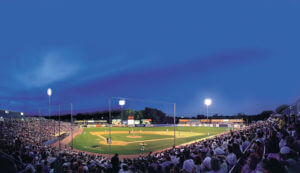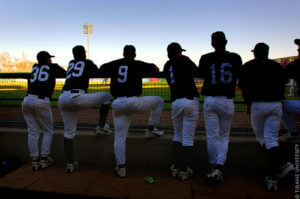MiLB and PR
Published on June 19, 2017, at 10:47 a.m.
by Terrika Woods.
The sports industry is a dream career path for most communicators. Whether the NFL, NBA, NHL or MLB, communicators are drawn to the sports industry. But what about minor league sports?
Minor League Baseball (MiLB) was formed on Sept. 5, 1901, and it continues to be a growing sports industry. There are currently 244 teams spanning over 43 states. So where do communicators come in for the success of MiLB teams? Primarily with media relations.
Media relations, a key PR function, plays a vital role in the sports industry. Media relations specialists spend the majority of their time interacting with the media.

According to Everything PR, “Media relations can be described as a company’s interaction with editors, reporters and journalists. The media can be newspapers, radio, television and the internet.”
Media relations specialists in MiLB wear this hat among many others. They can be found promoting and updating social media, planning special events and more. This position provides an ample amount of opportunities to use a wide variety of skills.

The marketing and media relations manager for the Tennessee Smokies, Connor Pearce, does it all.
“With me being marketing and media relations, I handle a lot of our advertising going outbound. So I control anything with TV stations, radio stations, newspapers, pre-game and post-game interviews, and TV features. I have a lot of different aspects going on.”
MiLB is similar to MLB, but still very different. The turnover rate for MiLB is high. Most players who get selected to play for a MiLB team end up being rotated out after each season. This is one of the major differences between the two organizations, but a difference on which the communications team thrives. So how do they keep the stands full?
Jesse Feldman, a media relations assistant for the Birmingham Barons, says that it’s all about the experience.
“We pride ourselves on having first class amenities and experiences at the field,” Feldman said. “We are trying to put out the best family fun product in Birmingham. I think that we have done a great job at making this an environment where people want to come and enjoy a baseball game.”

Even though the players rotate every season, it is still important to gain an idea of the player’s personalities and individual stories. Feldman says that player interaction is an every day procedure.
“It’s important for us, as communications professionals, to have a working relationship with all of the players,” Feldman explained. “The more you have face-time and interaction with the player and coaches, the better content they end up providing you with. It’s important to make them feel comfortable because you are always going to need something from them, and they are always going to need something from you.”
MiLB is known for connecting the local community through baseball. Most states have more than one team, and the teams are often located in larger cities. This structure may seem like a challenge for exposure and attendance, but this is another area where the communications team comes in. Just like any organization or brand, each MiLB team has a story to tell.
Pearce says that a team’s story tells it all.
“The biggest thing for [the Tennessee Smokies] is that we have America’s friendliest ballpark,” Pearce said. “It’s a very family-friendly atmosphere, whether you have six kids or you are an eighty-year-old and you brought your wife. The second and coolest thing is that the Cubs won the 2016 World Series Championship, and we had so many players 12 that once played at the Smokies. It has been a lot of fun riding that excitement train.”

The media relations team doesn’t stop after the season has ended. Feldman believes that there is constant work and planning to be done.
“It’s important to get out ahead of the game during the down months, December through February, to get to know the players and the coaches that may be here,” Feldman said. “Once the roster starts dwindling down, you are able to be more prepared and get out the best product possible.”
If there is one thing that brings people together, it would be sports. Playing a part in this connection can be a rewarding experience. Working in the sports industry can seem intimidating and a far-fetched dream, but it’s achievable.
“I think the biggest thing is getting your foot in the door. You have to start somewhere, whether it’s a paid or unpaid internship. It’s all about getting into the game. You will find the right opportunity eventually and everything will fall in the right place,” Pearce said.




